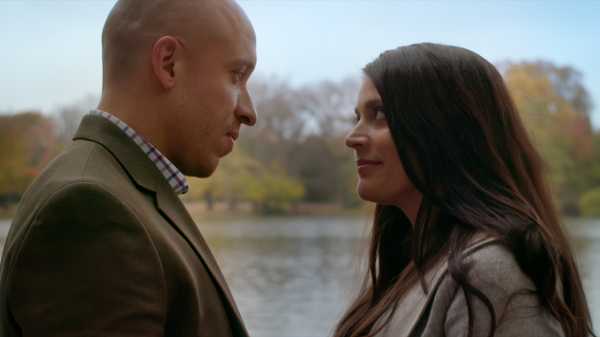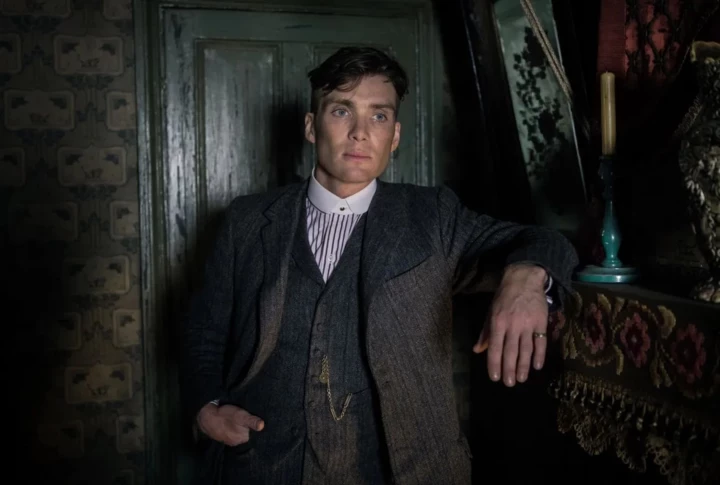
Save this storySave this storySave this storySave this story
Watch J. J. Kandel’s film, “Sparring Partners.”
“How do people meet each other?” the director J. J. Kandel asked me, bluntly. “How do you meet people?” The most common answers might be on the apps, at a bar, or from an audacious slide into the D.M.s. The protagonists of Kandel’s short film, “Sparring Partner,” however, met in a more classic venue, one that is a minefield of potentially inappropriate outcomes and tricky power dynamics: the office. “The fact is, at work, these are the people you’re around all the time,” Kandel continued. “Things happen.” In “Sparring Partner,” we see a pair of co-workers, played by KeiLyn Durrel Jones and Cecily Strong, in a park, on their lunch break. They’re sitting on a bench, reading fortune-cookie prophecies, deliciously, maybe even purposely, isolated. They’re looking out onto a beautiful autumnal vista, and they themselves are beautiful together. They have the flirtatious push and pull of a couple that hasn’t yet dared to utter the words “I like you” but the fizzy tension of one that may, at any second. It’s an idyllic image—the man and the woman on the bench—or at least it would be if he weren’t her boss, if he weren’t married, if she weren’t in so deep, if he weren’t, either.
Written by Neil LaBute, the author of the Tony-nominated play “Reasons to Be Pretty,” “Sparring Partner” challenges the audience to reconsider their ideas of right and wrong, and to determine where the line between the two is positioned, if there even is a line at all. Kandel knew that some viewers would disapprove of this particular brand of office liaison, but his goal was to have them feel for the fictional couple, anyway. “The general note to everyone on that set was: we want to be rooting for these guys,” he told me. “In a weird way, you want to say, ‘Oh, they’re meant to be together’—like, forget about all the stuff on paper that makes that almost impossible, complicated, whatever you want to call it.” To achieve this, he films the couple nonjudgmentally: at first, from a safe distance, with no abrupt movements, “like one of those nature shows,” as Kandel put it. And, from afar, things don’t look that bad. The man and the woman are so charming—to each other, and to us, the audience—that it’s simple to justify their presence on that bench. Until, alas, it’s not. The camera has crept in closer, and we are no longer viewers but voyeurs.
The woman doesn’t tell the man “I like you” in so few words, but she does make her feelings known. (She gives him the ol’ “So, I have this friend” razzle-dazzle.) Suddenly, their fizzy tension dissipates into stillness, the sparkle of ambiguity transforming into a stodgy reality. “We should probably get off this subject,” he tells her, visibly unnerved, after she recounts her “friend’s” crush on a co-worker. But a hasty topic change can’t put sand back in an hourglass that has exploded, and the woman can’t take back her words.
The couple is so watchable and so relatable, though they may be hard to watch, and one may not want to fess up to the relatability of their situation. But love is ignorant to the minutiae of its inception. It doesn’t matter if you meet your person at a bar or through an app or at the one place where you spend most of your waking hours. It doesn’t even matter if the connection is one that is rom-com orthodox or socially verboten. Relationships somehow always find a way to be devouring and belittling and downright irresponsible, regardless of who is in them or how they got there. The question of how people meet is integral to “Sparring Partner” ’s premise, but the conundrum at the heart of the film asks something even more difficult: “And then what?”
Sourse: newyorker.com







